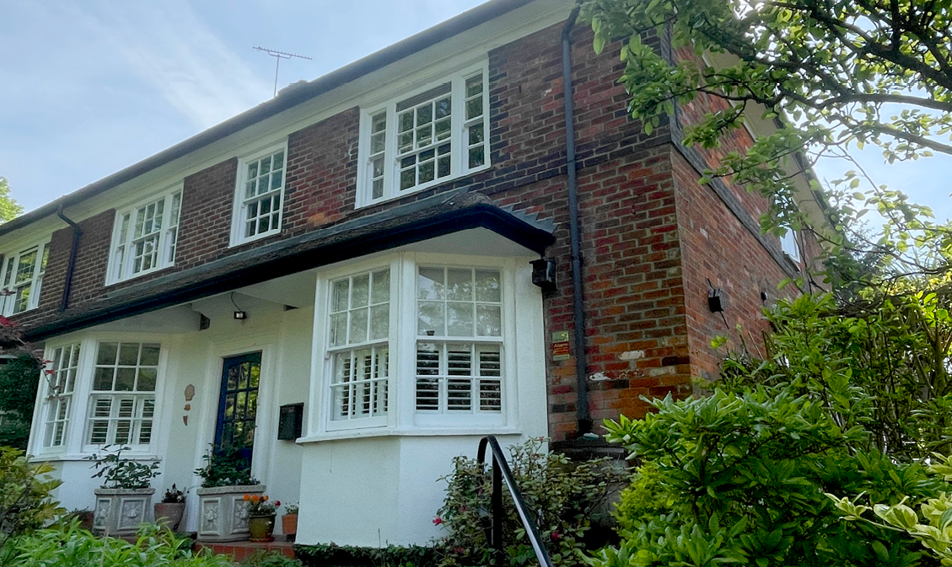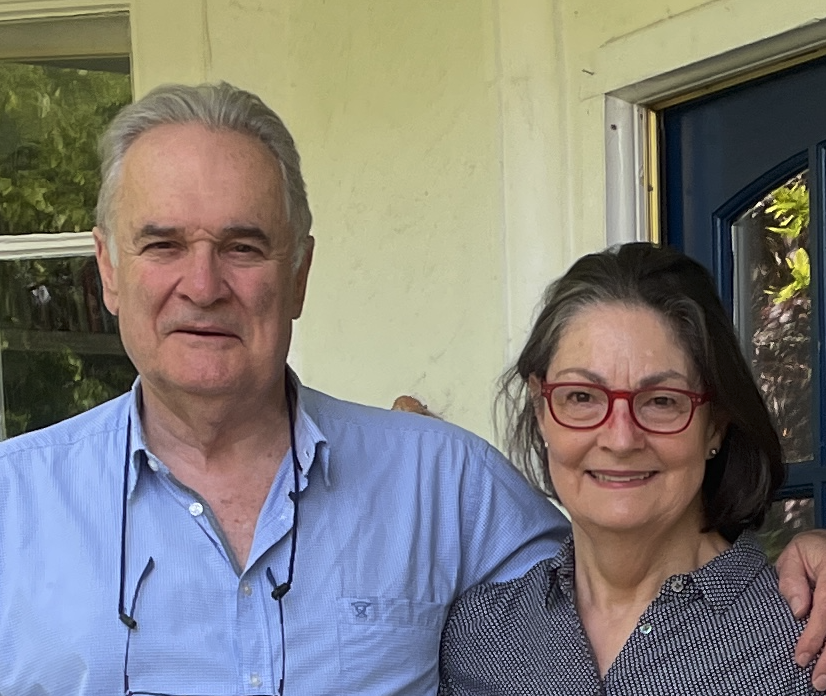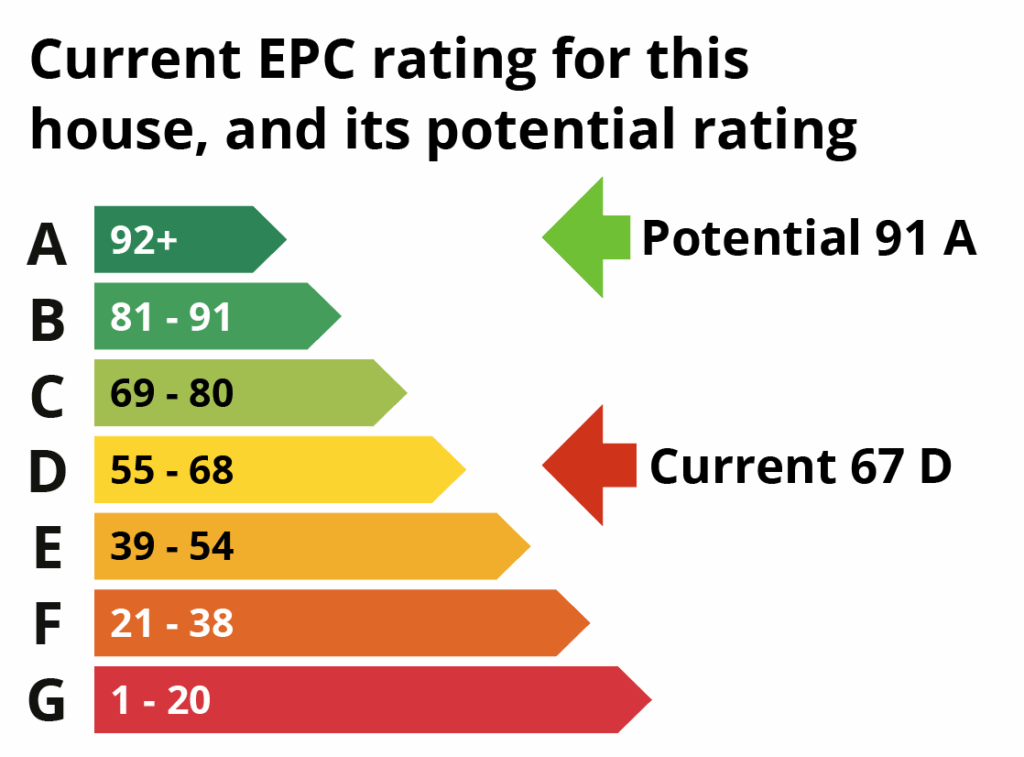
1940s semi-detached
Could your home be made warmer, cheaper to run, and better for the planet? See what’s possible when you take a whole-home approach to planning energy upgrades.
What’s the potential of a home like this?
This 1940s semi-detached home in St Clements, Oxford, is typical of post-war housing – cavity walls, a mix of suspended timber and solid floors, and a pitched roof with rooms in the roof.

The owners wanted to make their home more efficient and comfortable but were unsure where to start. With a Whole House Plan, they gained a clear picture of which upgrades would have the biggest impact, how much they might cost, and how to phase them sensibly.
Here’s what the plan revealed:
| Carbon emissions could be cut by over 90% |
| The EPC rating could rise from 67 D to 91 A |
| Annual fuel bills could fall from £3,548 to under £800 |
You don’t have to carry out every measure at once. The Whole House Plan gives you a roadmap so you can make improvements in your own time, at your own pace, and within your budget.

“The Whole House Plan really clarified the various measures and their costs for us, something we only had a vague idea about before. It laid out some interesting options, which have been incredibly helpful in planning our next steps.”
Felicity and Jan, St Clements, Oxford
Where this home stands now
House profile
| EPC rating | Current 67 D > Potential 91 A |
| Type | Semi-detached |
| Built | 1940s |
| Location | St Clements, Oxford |
| Occupancy | Owner-occupied |
| Bedrooms | 4 |
| Floor area | 222m² |
| Walls | Cavity |
| Floors | Suspended timber and solid |
| Roof | Pitched with room-in-roof |
| Windows | Timber, single and double glazing |
| Annual energy use | 32,982 kWh (150 kWh/m²) |
| Carbon emissions | 6.4 tonnes CO2/year |
The EPC rating: now vs potential

An EPC rates your home’s energy efficiency – from A (best) to G (worst). A higher score can mean lower bills, but it doesn’t guarantee comfort. Whole-home upgrades help bridge that gap.
Long-term comfort, short-term disruption
| Key to tables: | Low impact: • | High impact: •••••• |
| Minor measures | Comfort & health | Disruption |
|---|---|---|
| Low energy lighting | ● | ● |
| Insulate and draught-proof loft hatch | ●●●● | ● |
| Insulate sloping ceiling of bathroom extension | ●●●● | ●●● |
| Insulate flat roof of utility extension | ●●●● | ●● |
| Increase loft insulation to 300mm | ●●●● | ●● |
| New insulated front door | ●●●●● | ●● |
| Ventilation improvements | ●●●●● | ●● |
| Major measures | Comfort & health | Disruption |
|---|---|---|
| Suspended timber floor insulation (using robot) | ●●●●● | ●● |
| External wall insulation | ●●●●● | ●●● |
| New triple glazed uPVC windows | ●●●●●● | ●●●● |
| Air Source Heat Pump | ●●●●●● | ●●●● |
| Measure | Comfort & health | Disruption |
|---|---|---|
| Solar PV | ● | ●● |
Expert tip

“If loft areas are inaccessible due to rooms in the roof, it’s worth creating access. This allows you to check whether there is enough insulation and top it up if necessary.”
Geordie Stewart, Scheme Manager
The difference each step could make
These figures show how each recommended measure could affect the home’s EPC rating, energy bills, and carbon emissions – if installed in the order shown. They’re based on a full Whole House Plan tailored to this property.
| Measure | Est. cost | EPC | Fuel bill | CO₂/year |
|---|---|---|---|---|
| Where you are now | – | 59 D | £1,883 | 4.66 t |
| Loft insulation to 300mm | £1.5k–£2k | 60 D | £1,850 | 4.57 t |
| Suspended timber floor insulation (robot) | £4k–£5.5k | 61 D | £1,765 | 4.32 t |
| Flat roof insulation (utility extension) | £3k–£5k | 62 D | £1,737 | 4.24 t |
| External wall insulation | £23k–£28k | 74 C | £1,155 | 2.59 t |
| Ventilation improvements | £2.5k–£3k | 74 C | £1,155 | 2.59 t |
| Insulate sloping ceiling of bathroom extension | £1.25k–£2.5k | 75 C | £1,107 | 2.45 t |
| Three new insulated doors | £6k–£9k | 75 C | £1,072 | 2.35 t |
| Triple-glazed windows | £14k–£17k | 77 C | £979 | 2.09 t |
| Air source heat pump (with enhanced radiators + tank) | £13.5k–£17.5k | 80 C | £994 | 0.47 t |
| Solar PV (4 kWp) | £5.5k–£7.5k | 96 A | £338 | 0.04 t |
Boost your EPC rating
Installing a single major system like a heat pump or solar panels can still make a big difference. These examples show how individual upgrades could shift the home’s EPC and reduce carbon emissions – even before doing everything else.
| Upgrade option | EPC rating | Fuel bill | CO₂ emissions |
|---|---|---|---|
| Just solar PV | 89 B | £527 | 2.16 t |
| Just heat pump | 78 C | £1,137 | 0.54 t |
| Solar + heat pump | 93 A | £477 | 0.11 t |
Expert tip

“To improve energy efficiency, separate off the conservatory from the rest of the house with external-grade doors. Alternatively, consider replacing some or all of the glazed roof with solid insulated roof panels.”
Natasha Ginks, Retrofit Coordinator
These stories are here to inspire
Every home is unique, and the best way to use them is as a guide to picture what’s possible for yours.
Find more tips on making the most of the case studies here.
Need help or advice with costs? Check out our page on help with the cost of home retrofit for grants, advice, and other resources.
Wondering what’s right for your home?
A Whole House Plan gives you expert, independent advice on the best steps to take – and in what order – so every upgrade really works.
Don’t put it off another year. Take the first step with a free consultation. Our team of experienced Retrofit Advisers will listen to your goals, help you understand what’s possible, and outline the best next steps – no pressure, no obligation.
Smarter home upgrades. Backed by trusted retrofit expertise.
A partnership project
A House Like Mine is an Oxford City Council initiative, delivered as part of the Zero Carbon Oxford Partnership (ZCOP) in collaboration with Cosy Homes Oxfordshire. The idea was first developed through case studies in Charlbury, and has since been expanded to show what’s possible for homes across Oxford and Oxfordshire.
It’s designed to help you take the first step towards making your home cosy, energy-efficient, and ready for the future. Step by step.
A House Like Mine was funded by the MCS Foundation, Oxfordshire County Council, Oxford City Council, and Lucy Group. The case studies are licensed under a Creative Commons BY-NC-ND 4.0 licence (creativecommons.org).

Prefer a PDF version?
Download a shareable PDF of this case study – perfect for your community group, local class, or anyone curious about improving home energy efficiency.
We’re making this resource freely available to raise awareness of how retrofitting – upgrading your home to use less energy and stay comfortable year-round – can make a real difference.
Click here to download the PDF
